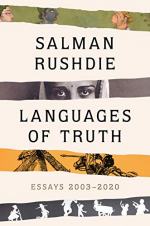|
This section contains 1,504 words (approx. 4 pages at 400 words per page) |

|
Summary
In Part One, “Wonder Tales,” Rushdie describes the first stories. Children love stories because they feed “their imagination” (3). Books and stories define the individual. Works of fiction, although not factual, “contain profound truth” (6). Rushdie cites several examples.
When considering mythological texts, once God is removed, the literature speaks for itself. Rushdie describes several examples, including The Thousand Nights and One Night.
Rushdie considers how story has evolved since migration has become commonplace in modern society. Cultures can now experience the stories of other cultures.
After finishing his memoir, Joseph Anton, Rushdie “felt a deep hunger for fiction” (15). He considers the differences between what nonfiction and fiction offer. He particularly examines animal fables and their handling of morality. Rushdie holds that fiction captures the “blending of the real and the surreal” (19). Because humans are “dreaming creatures,” people need such stories to survive (20). He further...
(read more from the Part One Summary)
|
This section contains 1,504 words (approx. 4 pages at 400 words per page) |

|




